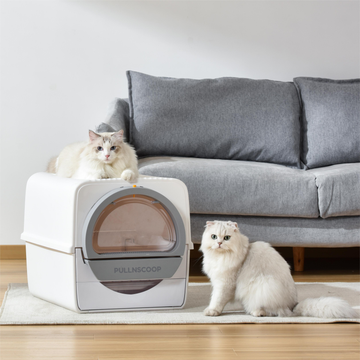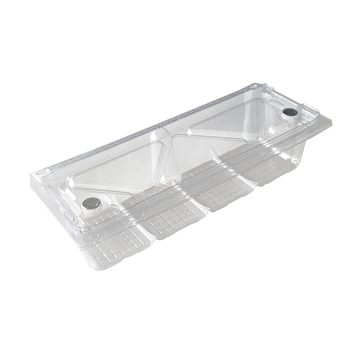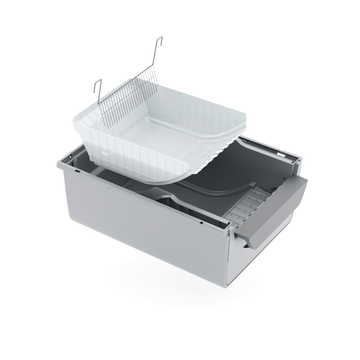Properly Storing Cat Food: A Guide for Feline Enthusiasts.
by Ruby Gin on Nov 01, 2023
As devoted cat parents, we all want the best for our feline friends, and that includes serving them fresh and nutritious meals. One of the key factors in maintaining the quality of your cat's food is how it's stored. Properly storing dry cat food is essential to maintain its freshness, prevent spoilage, maintain nutritional integrity, and ensure your cat's safety. In this guide, we'll explore the importance of keeping cat food dry and offer tips on storing it effectively.

Why Keep Cat Food Dry?
Keeping cat food dry is crucial for several reasons:
-
Preventing Moisture-Related Issues: Cat food, both dry and canned, contains a specific moisture content. When exposed to humidity or moisture, it can create an environment conducive to mold and bacterial growth. This can lead to digestive issues and health concerns for your cat.
-
Preserving Nutritional Value: Moisture can degrade the vitamins, minerals, and other nutrients in cat food. Maintaining the food's nutritional integrity is vital for your cat's well-being.
-
Texture and Taste: Dry kibble can become soggy when exposed to moisture, altering its texture and taste. This may lead to your cat rejecting the food.
-
Food Safety: Moisture can promote bacterial growth, which can cause food spoilage and contamination, potentially leading to gastrointestinal upset for your cat.
Now that we understand why it's important to keep cat food dry, let's explore some practical storage tips.
Tips for Properly Storing Cat Food:
1. Use Airtight Containers:
Whether you're storing dry kibble or opened canned food, airtight containers are your best friend. These containers help maintain freshness and keep moisture and air out. Choose high-quality, food-grade containers with secure, tightly sealing lids.

2. Store in a Cool, Dry Place:
Keep cat food in a cool, dry location away from direct sunlight. Temperature fluctuations and high humidity can lead to spoilage. Avoid storing it in areas like garages or basements where conditions may not be ideal.
3. Check Expiry Dates:
Always check the "best by" or "use by" date on the packaging. Ensure you use the cat food before it reaches its expiration date. Although it may still be safe to consume after this date, the quality and nutritional value may decline.
4. Clean Containers Regularly:
Wash and clean your storage containers regularly to prevent residual oils or fats from going rancid. Dirty containers can affect the food's quality.
5. Pest Control:
Make sure the storage area is free from pests like rodents and insects. Use appropriate pest control measures to avoid contamination.
6. Avoid Freezing Dry Food:
Do not store dry cat food in the freezer, as freezing can affect the food's texture and nutritional value.
By following these guidelines, you can help extend the shelf life of your cat's food and keep it fresh and nutritious. Always refer to the manufacturer's instructions for specific storage recommendations, as they may vary depending on the brand and type of cat food. Your furry friend will thank you for serving them meals that are not only delicious but also safe and healthy.






DIY Stainless Steel Litter Box Solutions
The Impact of Stainless Steel Litter Boxes on Cat Health
How to Clean Your Stainless Steel Litter Box
Stainless Steel Litter Boxes: User Reviews